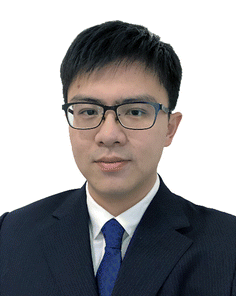Nanoscale Horizons Emerging Investigator Series: Dr Baisheng Sa, Fuzhou University, China
Abstract
Our Emerging Investigator Series features exceptional work by early-career nanoscience and nanotechnology researchers. Read Baisheng Sa’s Emerging Investigator Series article ‘Contact engineering for 2D Janus MoSSe/metal junctions’ (https://doi.org/10.1039/D3NH00450C) and read more about him in the interview below.
Dr Baisheng Sa received his BSc (2008) in Materials Science and Engineering and PhD (2014) in Materials Physics and Chemistry from Xiamen University. He is currently a professor in the School of Materials Science and Engineering at Fuzhou University. His research focuses on integrated computational modelling, density functional theory calculations and machine learning design of novel low-dimensional materials and van der Waals heterostructures for energy, environmental, and electronic applications. He was recognised as one of the top 1% of highly cited authors in Royal Society of Chemistry journals (2019) and by the Outstanding Young Scientists Foundation of Fujian Province of China (2021).
Read Baisheng Sa’s Emerging Investigator Series article ‘Contact engineering for 2D Janus MoSSe/metal junctions’ ( https://doi.org/10.1039/D3NH00450C ) and read more about him in the interview below:
NH: Your recent Nanoscale Horizons Communication reports computational evidence that the Schottky barrier can be controllably lifted in heterostructures consisting of Janus MoSSe and 2D vdW metals and provided a descriptor capable of predicting the Schottky barrier heights of different 2D metal–semiconductor junctions using machine learning. How has your research evolved from your first article to this most recent article and where do you see your research going in future?
BS: My first article was published in 2010 when I was a student. It focused on density functional theory (DFT) calculations of the structure and chemical bonding in Ge3Sb2Te6, a layered chalcogenide for phase change data storage applications. I finished my PhD thesis in 2014 on the topic of layered ternary Ge–Sb–Te chalcogenides based on density functional theory calculations. Thereafter, I started my research career at Fuzhou University and transferred my research interests to two-dimensional chalcogenides and corresponding heterostructures for energy, environmental, and electronic applications. With the fast development of artificial intelligence (AI) for science methods, my goal is to combine DFT calculations and machine learning modelling together for the understanding and development of two-dimensional chalcogenide-based materials. Since the reliability of machine learning models is dependent on the quality of the data source, I try to generate my own high-standard datasets using high-throughput DFT calculations. The latest Nanoscale Horizons Communication was born from these efforts. In the future, I will keep focusing on the study of two-dimensional chalcogenides and corresponding heterostructures using DFT calculations and machine learning modelling. With the help of AI in scientific methods, our theoretical understanding of two-dimensional chalcogenides will go deeper and provide more valuable guidance for their potential applications.
NH: How do you feel about Nanoscale Horizons as a place to publish research on this topic?
BS: I think Nanoscale Horizons is a high standard journal with very good academic standing. It is an ideal venue for the publication of works focused on two-dimensional chalcogenides and density functional theory plus machine learning.
NH: What aspect of your work are you most excited about at the moment?
BS: For the application of two-dimensional chalcogenides in electronic applications, it is essential to reach a fundamental understanding of the physical origin of Schottky barrier heights and Fermi-level pinning effects. Based on the symbolic regression study in our recent Nanoscale Horizons Communication we found a simple general descriptor including only two parameters to predict the Schottky barrier height.
NH: In your opinion, what are the most important questions to be asked/answered in this field of research?
BS: For two-dimensional chalcogenides, the question is how to achieve application-driven design for new materials? For density functional theory calculations, it is how to simulate larger systems without losing accuracy? For machine learning modelling, we must consider how to improve the interpretability of proposed machine learning models and enhance the accuracy of predictive models with smaller datasets?
NH: What do you find most challenging about your research?
BS: My research requires the latest information from multiple disciplines such as materials science, chemistry, physics, and computer science. I must maintain continuous learning to keep my knowledge up to date.
NH: In which upcoming conferences or events may our readers meet you?
BS: I usually go to academic conferences on the topic of materials genome engineering and materials informatics. For instance, I will attend the Materials Informatics Summit 2024 in Kunming, China.
NH: How do you spend your spare time?
BS: I play basketball two or three times every week. The feeling of shooting a long-range three-pointer is truly delightful. At the same time, it is a very good way to relieve stress and keep my body in good condition.
NH: Can you share one piece of career-related advice or wisdom with other early career scientists?
BS: I believe interest is the most powerful inner driving force. Never forget the curiosity that initiated your journey into scientific research.
| This journal is © The Royal Society of Chemistry 2024 |

